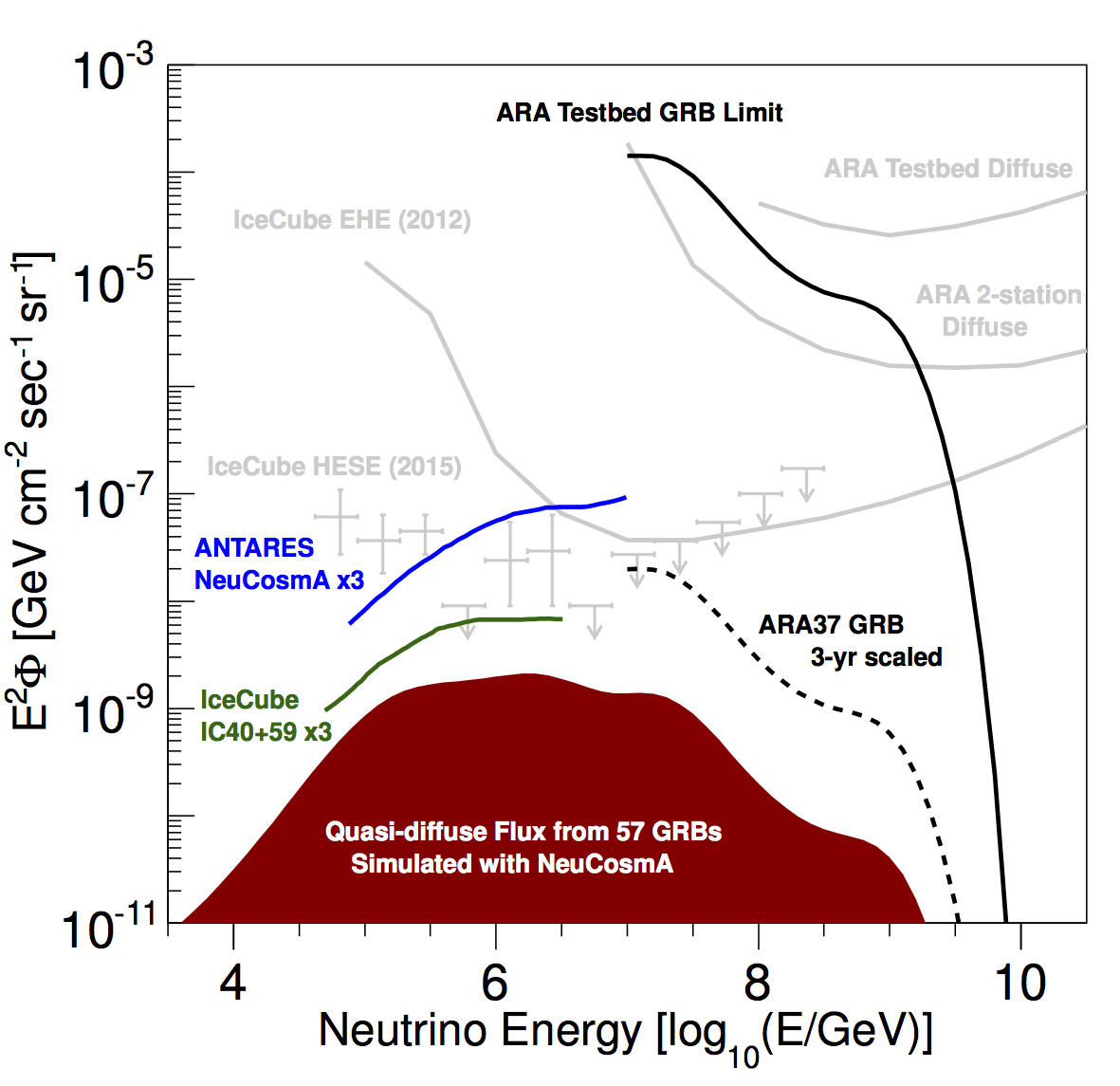I’m an particle astrophysicist who has previous worked as a postdoctoral researcher at the Center for Cosmology and AstroParticle Physics (CCAPP) of The Ohio State University in Columbus, OH, USA.
More recently, I have been a Visiting Assistant Professor at Otterbein University (2018-2019) and Denison University (2019-2021). I seek to study the highest energy particles in the universe: ultrahigh energy comsic rays and ultrahigh energy neutrinos. My current efforts concentrate on the detection of such particles in dense media such as ice. A promising means of achieving this goal is the detection of radio-frequency signals created by interactions between these particles and ice via the Askaryan effect. I am currently a member of the ARA collaboration and the EVA collaboration, and have worked on the IceCube and ANITA collaborations.
My CV can be found here and a briefer resume here
Research highlights

We recently completed a search for UHE neutrinos correlated with astrophysical sources known as gamma ray bursts (GRBs) using data from the ARA Testbed prototype station. These energetic transient sources flash for brief periods (several minutes) in the gamma ray spectrum before the signal disappears. They are a potential source of high and ultrahigh energy neutrinos as products of particle acceleration and highly energetic reactions in the medium around the burst. Although no neutrinos were found that correlate with these astrophysical objects, we have placed a new ultrahigh energy constraint on the quasi-diffuse flux from GRBs.

The ARA collaboration recently completed a search for a diffuse flux of UHE neutrinos using data from the ARA Testbed prototype station. Although the prototype station's sensitivity is limited, the techqniques developed in the analysis will be useful for future analyses with the deeper and more numerous full stations. A full 37-station ARA array is predicted to put firm constraints on many of the current GZK flux models.